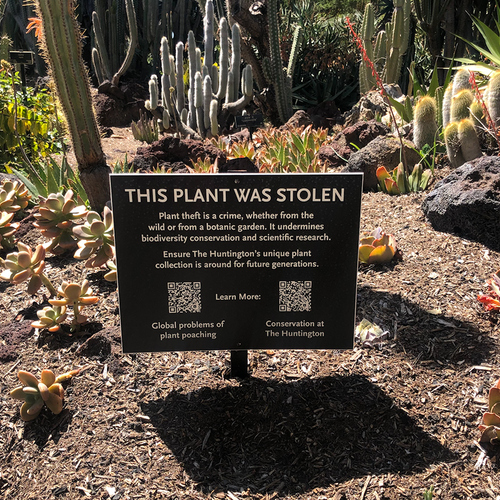When I spotted a particular sand dollar cactus (Astrophytum asterias) at the Philadelphia Flower Show a few months ago, I knew I was in trouble. With a delightful color pattern I had never seen before, I desperately wanted it for my collection. But this plant wasn’t for sale. I also knew my usual garden centers and houseplant stores would not be able to source this plant for me, so I turned to the internet. As I scoured the pages of eBay, in search of a plant for the first time, some listings set off alarm bells in my mind.
According to the U.S. Census Bureau, an estimated $1.2 billion of e-commerce sales occurred in 2024, an 8% increase from 2023. This made up about 16% of all commerce in 2024, another increase from 15% of total sales in 2023. As ease of access increases and more retailers provide online ordering, consumers are opting to click a button and have more of their purchases delivered to their front door rather than shopping in-store. This includes buying plants.
Garden centers, nurseries, and wholesale retailers are shipping plants across the country while plant enthusiasts are making side hustles out of selling propagations of their prized specimens. These modern options have given more people access to a greater catalog of plants from around the world, but this online botanical market has a dark side. Increased access and demand encourage and enable plant smuggling, allow more invasive species to be sold and spread, and inspire countless AI scams.
In part 1, we will be discussing how our online marketplaces have bolstered the illegal plant trade.
Collectible plants are being illegally and unsustainably harvested
The popularity of succulents and cacti as houseplants has created a booming market for rare and out-of-this-world specimens. While far from a modern phenomenon, poachers are cashing in on the craze for collectible plants by stealing and illegally harvesting the most sought-after varieties at unprecedented rates. And online marketplaces, like eBay, allow smugglers to sell directly to consumers rather than having to find retailers to unload their goods.
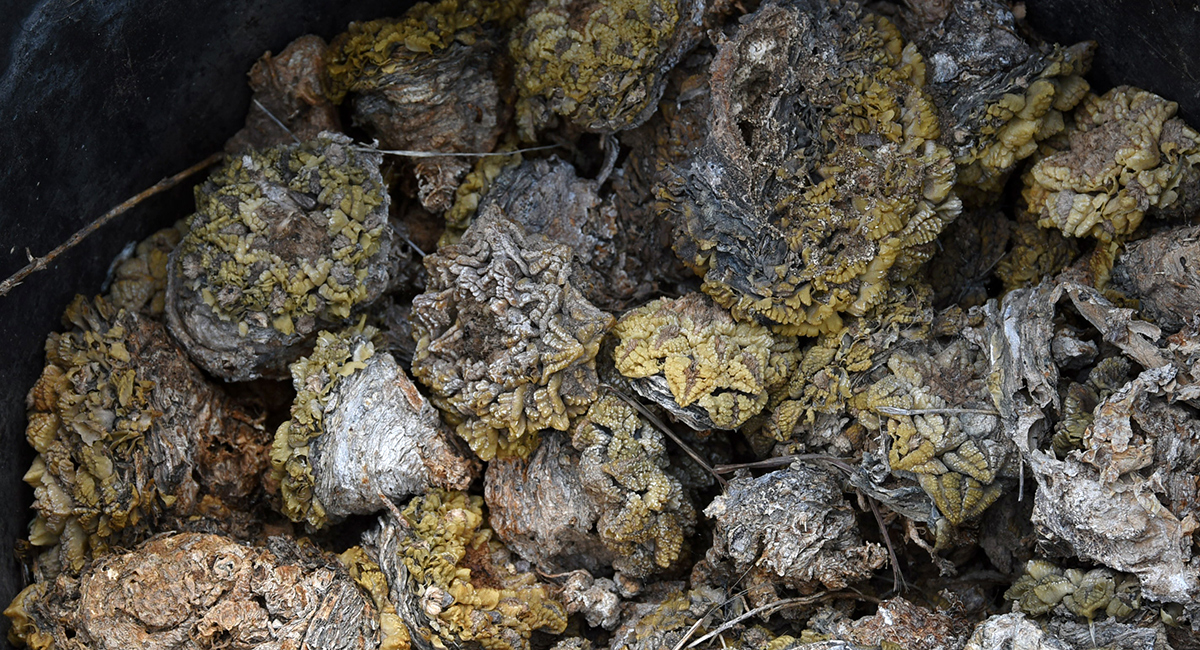
This was proven by a case in 2024, when the U.S. Fish and Wildlife Service sentenced four cactus traffickers for the illegal harvest, sale, and/or transportation of a thornless cactus called living rock (Ariocarpus fissuratus). Their investigation included scouring eBay records and emails that revealed this small ring of poachers had removed somewhere between 10,000 and 15,000 plants from the wild. When this number of specimens are harvested, there are unrepairable effects. In the case of living rock, which grows exclusively in the Big Bend region of Texas and northeastern Mexico, isolated populations of decades-old plants were wiped out completely. If they can return to these areas at all, it would take decades for their populations to be rehabilitated.
Botanical gardens are disrupters and targets
Thankfully, we have impassioned plant people at botanical organizations and intuitions across the globe who are stepping up to find solutions for this increasing trend. Botanic Gardens Conservation International (BGCI) is an organization that represents botanic gardens in more than 100 countries and assists in uniting and aligning these institutions in all matters of plant conservation. Their latest campaign is an international effort to combat the illegal plant trade.
One of the botanic gardens in the United States to partner with BGCI in this new campaign is The Huntington in San Marino, CA. With a long history of conservation programming, The Huntington was particularly suited to contribute to this effort.
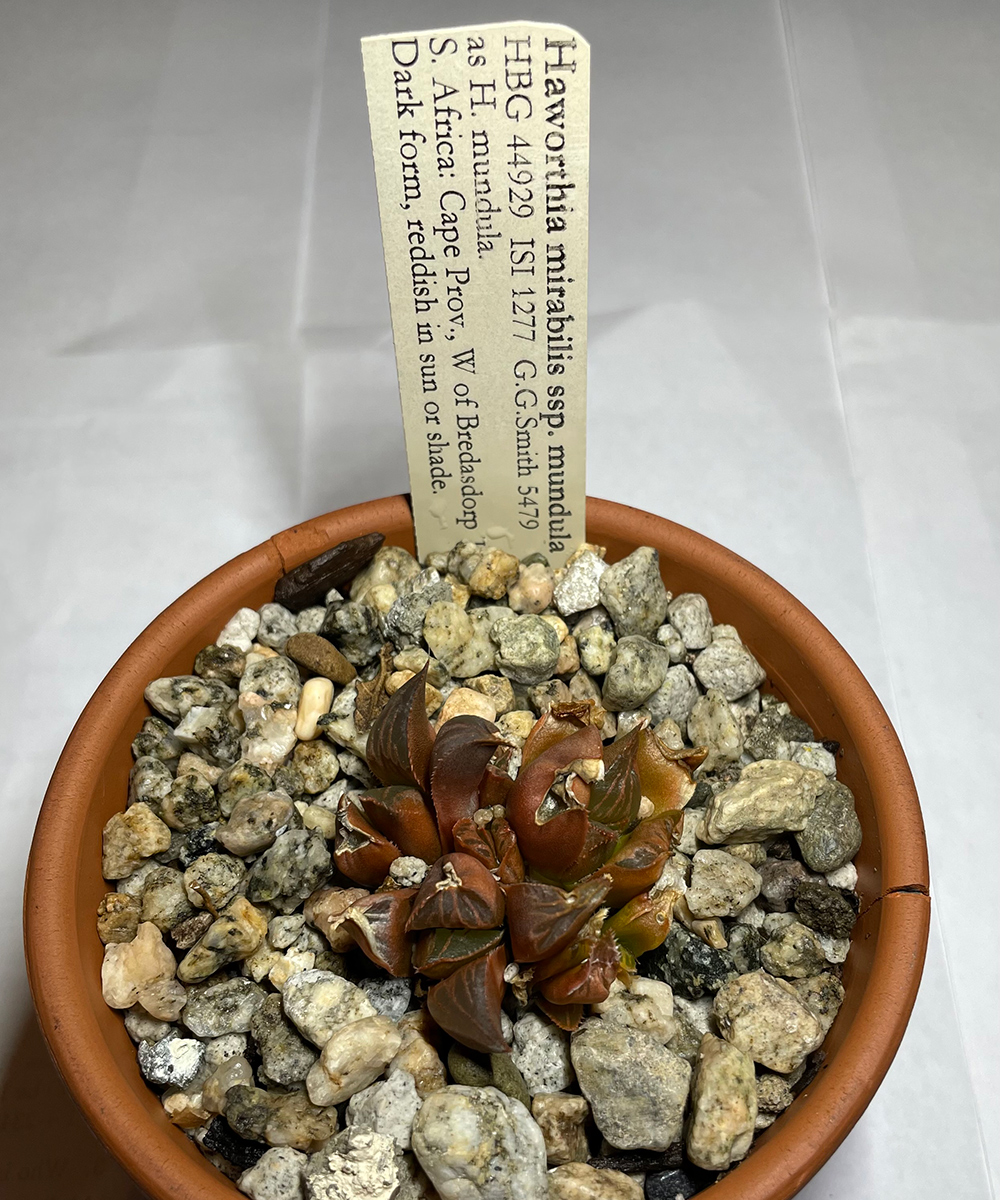
“We have a program at the Huntington called International Succulent Introductions (ISI), which was originally created in the 1950s to bring new and unusual plants into the commercial marketplace so people wouldn’t get them out of the wild. This is conservation horticulture, and people realized this was important a long time ago,” said Sean C. Lahmeyer, the associate director of the botanical collections, conservation, and research at The Huntington and a member of BGCI’s Illegal Plant Trade Coalition steering committee.
The Huntington officially took over ISI in 1989, has had an established conservation program since the 1990s, and is a designated plant rescue center for the U.S. Fish and Wildlife Service. But after a series of plant thefts from their Desert Garden in 2021, the organization has reevaluated and reinvigorated their initiatives. It was clear that the work currently being done was not enough to disrupt the increasing illegal trade.
“This isn’t new,” said Lahmeyer. “People have been going out into the local deserts and taking cacti for generations. I think we’re just at a tipping point now.”
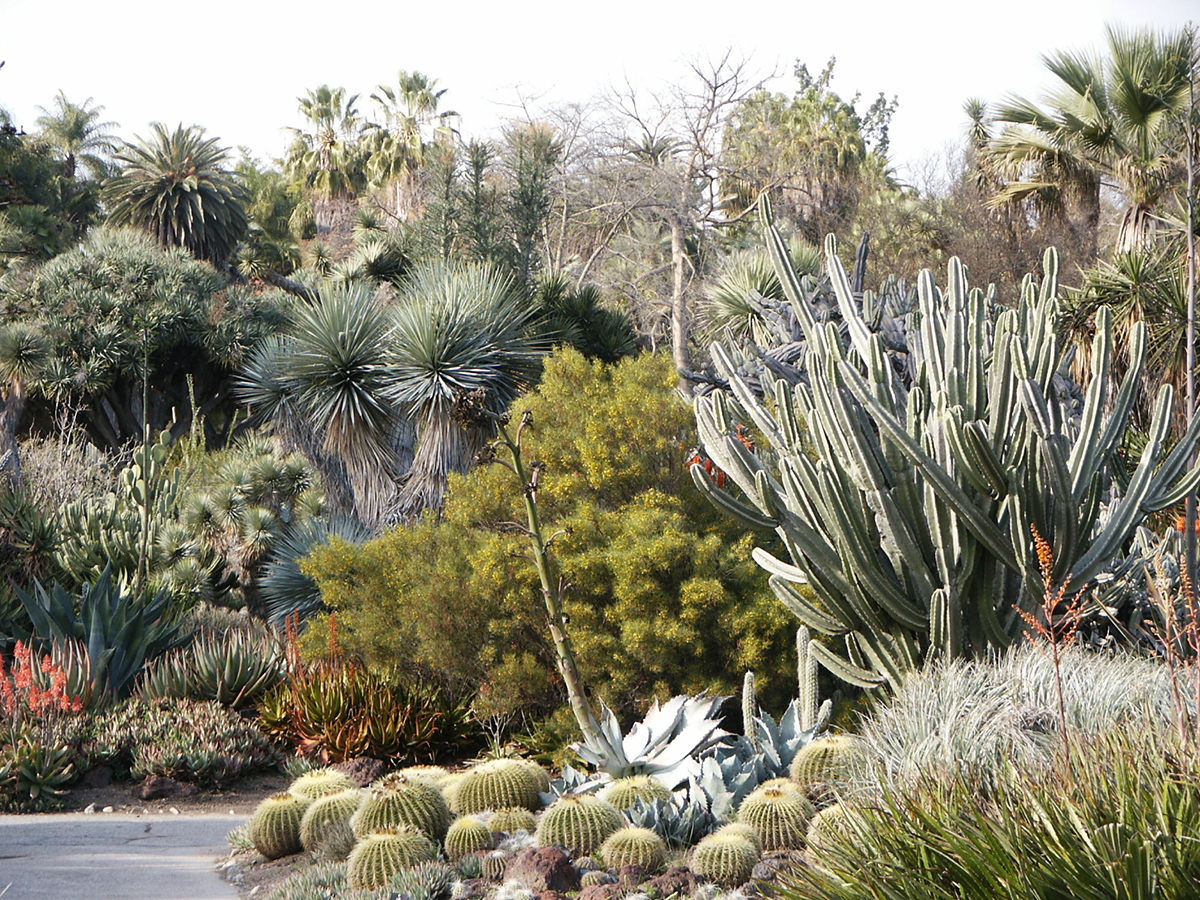
As with illegally harvesting from the wild, Lahmeyer noted that The Huntington has been recording plant theft in their gardens since the early 1970s. However, they saw an uptick during the COVID-19 pandemic.
“We were very proud to be open during the pandemic, to allow people to have that time outside, but we noticed a lot of bad behavior . . . catching people indiscriminately taking plants out of the garden. We thought, what’s driving this? We think the motivation for taking a rare plant from our garden is the same motivation for taking that rare plant out of the wild,” said Lahmeyer. Whatever was encouraging poachers to harvest more plants from the wild was emboldening others to steal more from public and private gardens.
Strategies for tackling online plant crime
While flooding the market with legally cultivated plants has lowered prices and curbed the illegal harvesting of some specific species in the past, dismantling this system of smuggling and poaching during the internet era will take a multipronged approach.

At The Huntington, they found some inspiration from the infamous art heist at the Isabella Stewart Gardner Museum in Boston. After 13 artworks were stolen from the museum, the single largest art theft in the world, the empty frames were purposefully left hanging on the walls as reminders of the crime that occurred.
In place of frames, The Huntington installed signs that say “This plant was stolen” with QR codes that provide visitors with additional information. “That very simple communication tool staggers people,” Lahmeyer expressed. “They can’t believe anyone would take a plant. So we need to raise awareness on this problem no one is talking about but we’ve noticed for a long time.”
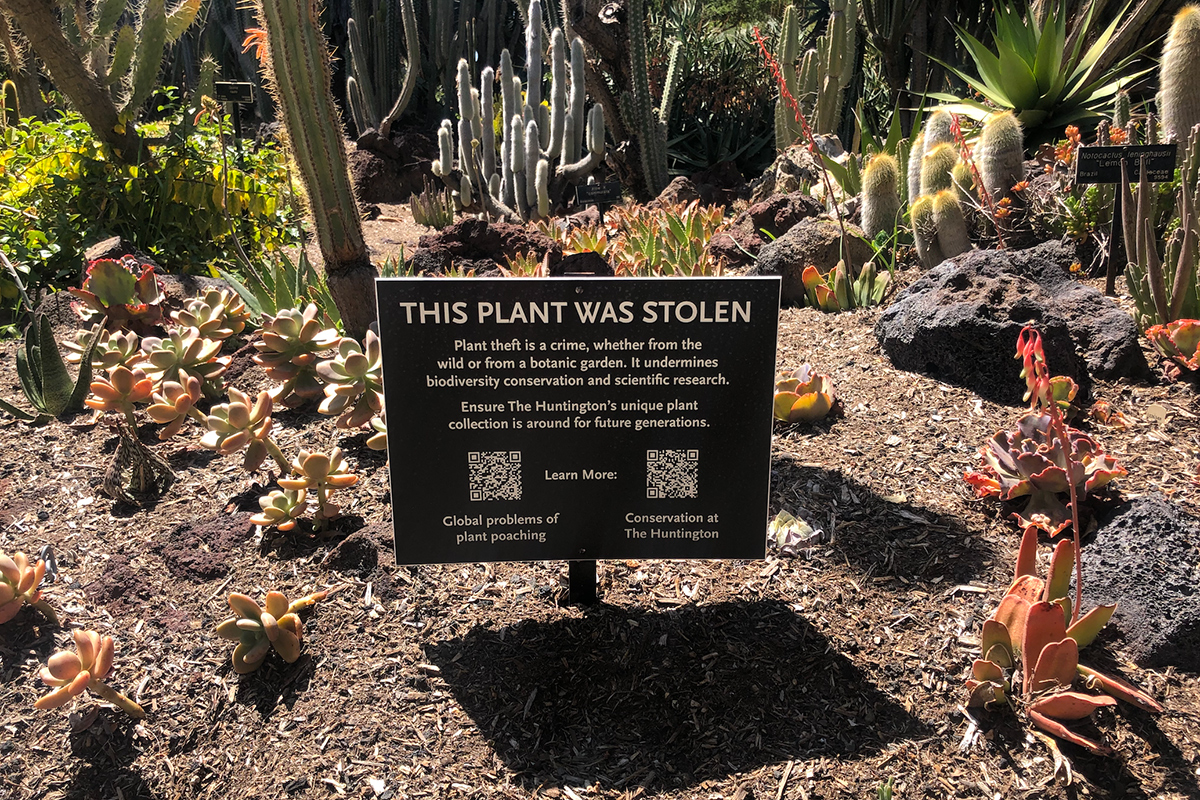
While individual efforts are excellent at raising awareness at the local level, a global initiative is necessary to tackle this international issue. This is where BGCI’s network comes in.
“We looked at the good messaging that zoos were doing and mimicked their strategy to create an awareness campaign that officially launches at the International Union for Conservation of Nature (IUCN) World Conservation Congress in Abu Dhabi this fall,” said Lahmeyer.
Increasing public awareness is just step one of this battle. The challenge of convincing governments to overhaul the regulations, procedures, and penalties remains. Lahmeyer outlined the major issues that must be addressed: officials unable to properly identify plants at ports, the use of third-party couriers that circumvent the formal checking and tracking of goods, overlapping legal jurisdictions that make regulations difficult to enforce, low risks of getting caught, lenient penalties, and liability that gets placed on buyers rather than criminals.
“We don’t want to penalize buyers who are buying plants unknowingly from the wild. That is not the intention. We want to raise awareness but not say it’s your fault,” Lahmeyer said.
How to ensure your plant hasn’t been trafficked
While gardeners and plant lovers are not to blame for the botanical black market, we can make an impact by gaining knowledge and practicing conscious consumerism.
The slogan for BGCI’s new campaign against the illegal plant trade is “Think Twice, Trade Right.” While Lahmeyer hopes this initiative is applied before the plant reaches the consumer via big-box stores and plant retailers, shoppers can also use this lens to be more discerning of the plants they’re buying.

Whether shopping in person or online, if a new plant stands out as being particularly different or unusual, think twice. As Lahmeyer said, “Think about the chain of custody of that plant. Where did that plant come from?”
There are red flags to be aware of and ways to hold sellers accountable. Lahmeyer explained that wild-grown plants will often look, “burly, weathered, and tend to be bigger and larger [than those artificially grown].” If a plant you’re looking at online raises suspicions, don’t hesitate to ask the vendor how the plant was cultivated. If you’re purchasing a plant from overseas, request copies of the paperwork necessary for importing a plant.
Find the silver linings—and make responsible choices
While learning about the proliferation of the illegal plant trade can be disheartening, there are reasons for hope. The internet, though sometimes a tool for traffickers, can also be a powerful force for good. For example, Lahmeyer shared a case in Los Angeles where a houseplant store was caught selling wild-harvested agaves. The impressive, mature plants were being sold for hundreds of dollars each—until a Facebook photo of the store owner posing with them surfaced. That image is now part of the evidence being used against him.
Stories like this show that public vigilance and digital accountability can make a difference. Still, much of the work to curb illegal plant harvesting must happen at institutional and governmental levels. In the meantime, gardeners can play a part by making informed, ethical purchases.
“We want people to keep enjoying plants,” Lahmeyer emphasized, “but we want them to be artificially and sustainably produced. That is the goal.”
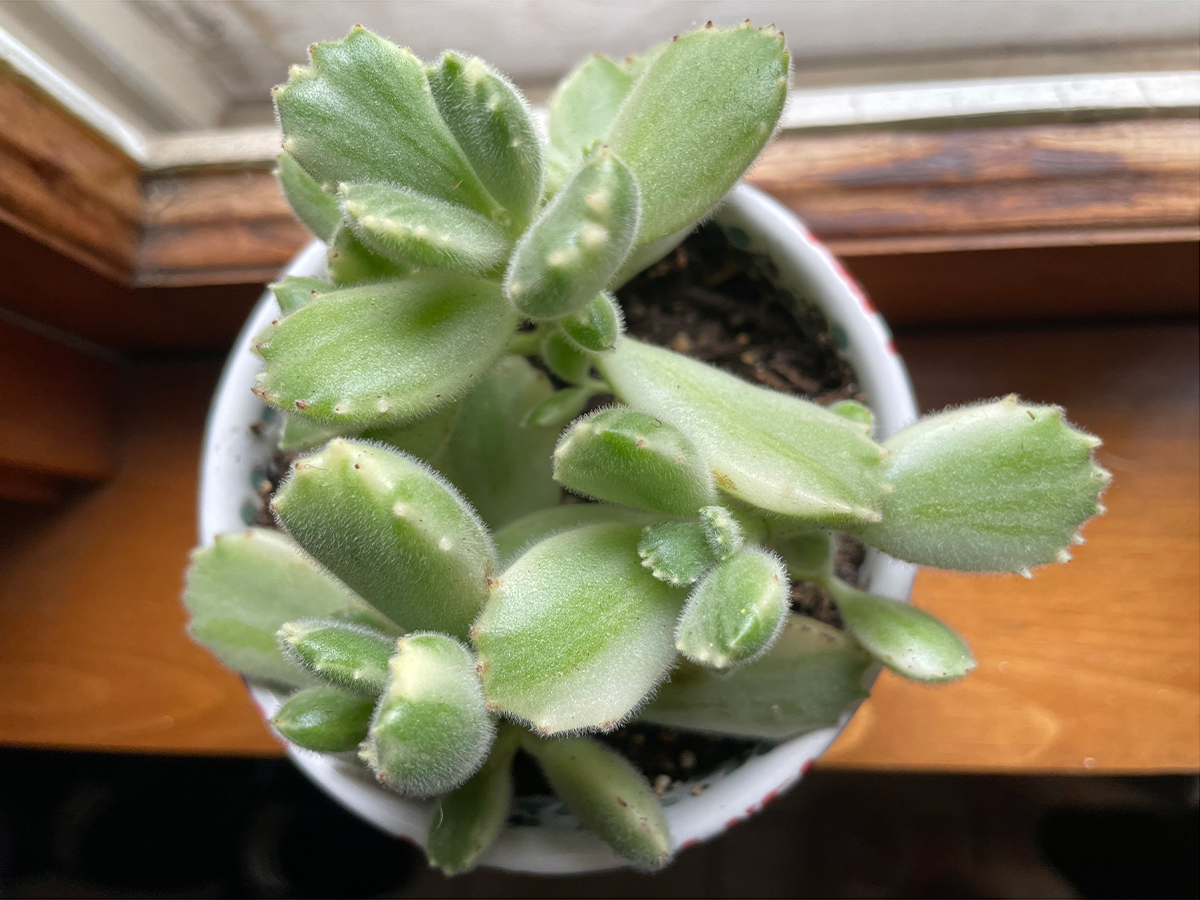
Kaitlyn Hayes is Fine Gardening’s digital content editor. Follow her on Instagram @agirlherdogandtheroad.
Fine Gardening Recommended Products
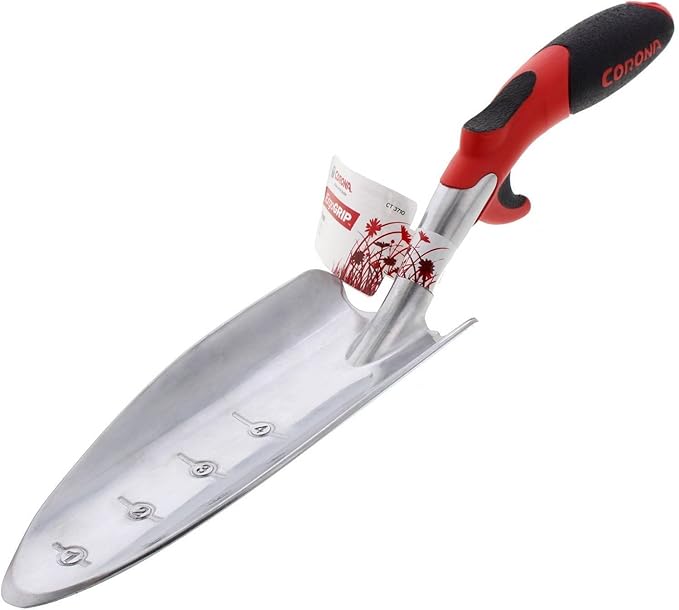
Corona E-Grip Trowel
Fine Gardening receives a commission for items purchased through links on this site, including Amazon Associates and other affiliate advertising programs.
Handle Material: Aluminum. Handle Length: 14-1/2 in. Overall Length: 14.5 in. Head Material: Aluminum. Handle Color: Red.

SHOWA Atlas 370B Nitrile Palm Coating Gloves, Black, Medium (Pack of 12 Pairs)
Fine Gardening receives a commission for items purchased through links on this site, including Amazon Associates and other affiliate advertising programs.
Lightweight and close-fitting for excellent dexterity. Machine washable. Breathable back of hand to reduce perspiration. Designed for easy movement and continuous wear. Ideal for aerospace, assembly, automotive, construction, final fix, gardening, manufacturing, operating machinery, packaging, precision handling, tiling, warehousing.
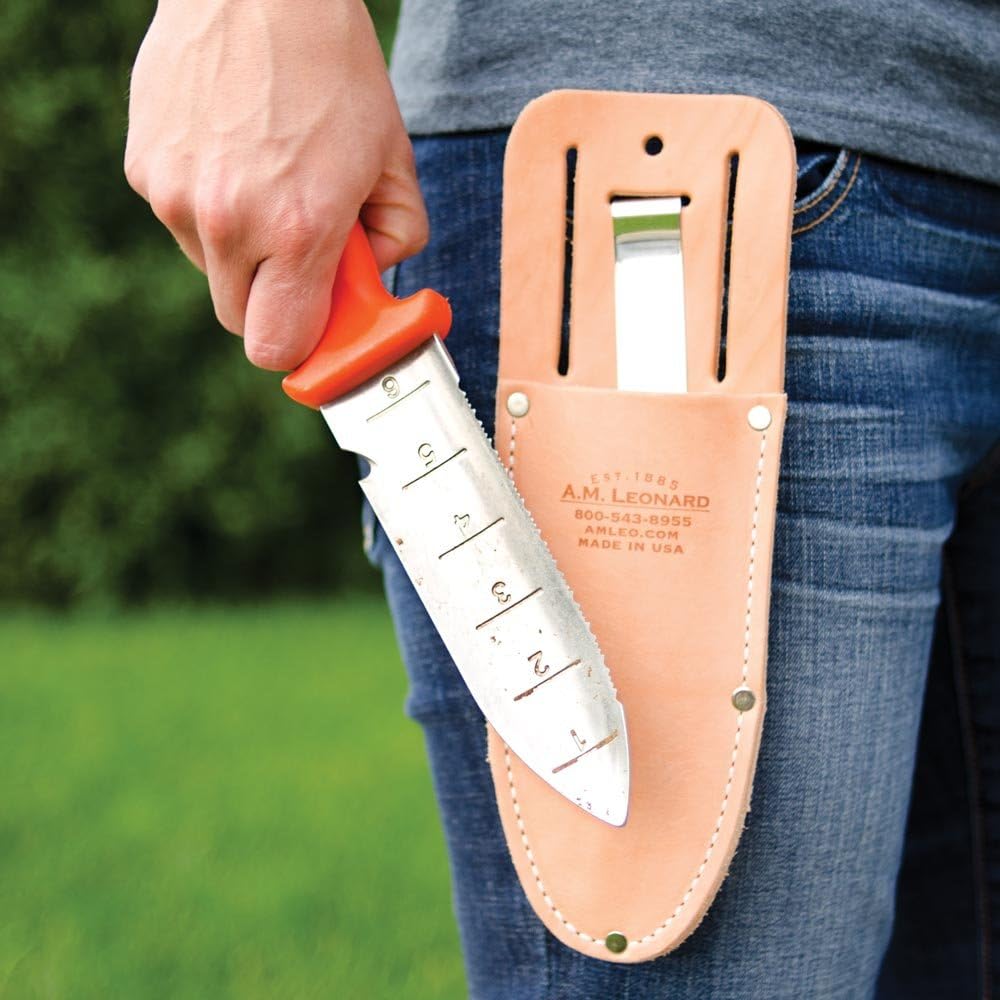
A.M. Leonard Deluxe Soil Knife & Leather Sheath Combo
Fine Gardening receives a commission for items purchased through links on this site, including Amazon Associates and other affiliate advertising programs.
MULTITASKING DUAL EDGES: a deep serrated edge and a tapered slicing edge ideal for tough or delicate cuts. DURABLE 6-inch stainless steel blade withstands 300 lbs of pressure. TWINE CUTTING NOTCH, DEPTH GAUGE MARKINGS & spear point – no need to switch tools when using this garden knife. LEATHER SHEATH: heavy duty, protective, clip on sheath to keep your knife convenient and secure. LIFETIME WARRANTY.

